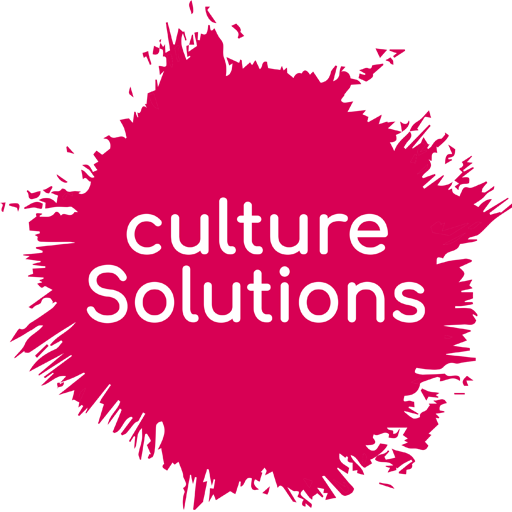1 billion for EU international cultural relations by 2027
By Damien Helly
This blog post is the written version of the speech given by Damien Helly at the European Parliament’s public hearing on EU international cultural relations in Brussels on 13 July 2022. It summarises culture Solutions’ analyses on the implementation of the EU cultural relations policy framework and suggests a set of priorities for the EU Council Work Plan on Culture 2022-2025.
The recent French Presidency of the EU, with the adoption of an ambitious digital regulation package, will have strong implications for Europeans’ cultural rapport with tomorrow’s world (and global digital platforms).
Since the adoption of first 2016 policy orientations for EU international cultural relations, things have been moving in the right direction, thanks to joint efforts made by the Parliament, the Commission, the EEAS, EUNIC and all relevant cultural operators and networks. Yet, the 2016 dynamic has slowed down, even more so with the Covid pandemic. The EU international cultural agenda is a recent and young agenda, and change takes time to happen. Change is taking place, yet still in a slightly scattered and piecemeal fashion. The approach is perhaps too reactive and the pace probably too slow in comparison with the speed and violence of international and global trends and shocks.
Internal and external cultural agendas are closely intertwined. As former HR/VP Mogherini used to state, what the EU does internally – for instance the post-Covid recovery plan for culture – is observed by its international partners.
It is not clear whether Europeans, as a group of societies and institutions, are (still) cultural trend setters. To maintain some sort of cultural relevance worldwide, the EU needs to scale up its international cultural work and give itself some quantitative targets against which to measure progress in EU international cultural relations. In the culture Solutions 2020 Composing Trust report, we estimated that around 250 million euros had been commissioned to dedicated international cultural relations programmes between 2016 and 2019. To match global challenges ahead, the European Parliament should ask the Commission and the EEAS to double the investment and earmark 1 billion euros worth of external actions with a cultural component in the new Multiannual Financial Framework 2021-2027.
These funds would allow the EU to actually implement the commitments that institutions and member states have already made on paper. As a matter of fact, culture has been the orphan of EU external action in terms of budget and human resources: cultural focal points in EU Delegations are overloaded, they usually deal with culture as an add-on and are constantly looking for financing options within EU Delegations, because there is no specific budget line for cultural relations. Recent global initiatives such as the Global Gateway or the European Green Deal do not have explicit cultural components. The New European Bauhaus initiative had announced an international dimension since the very beginning, yet it could have been a more prominently intercultural part of the initial design for its co-creation with relevant stakeholders in and outside the EU.
The 2021 EU Perceptions studies and recent work on cultural diplomacy show there is a growing demand for cultural exchanges with the EU and European societies. The EU will need to be adequately equipped to respond to these demands. The Ukraine crisis demonstrates the need to strengthen the international component of EU cultural action, in a new context of conflict, polarisation and increasing non-alignment requiring more and more dialogue. The growth of authoritarianism requires some update of the EU cultural relations approach towards societies living under illiberal or authoritarian regimes. There will be a need to re-invest in some forms of joint EU cultural diplomacy in certain tense contexts, while ensuring that cultural spaces and creators are safeguarded from politicisation.
Current trends and challenges thus point to the need for the Council to have a robust international component in its work plan on culture, in comparison with the 2018 shy mention.
Cultural action and artistic creation play a central role in behavioural change on global issues such as climate change adaptation and mitigation, biodiversity safeguarding and digital sphere and the metaverse (where new imaginaries are now developing). Very soon,
- EU institutions will work on the mid-term review of the 79,6 Billion-worth NDICI (the financing instrument for external action), they will be well advised to review its cultural component and assess the need for a specific budget line for EU international cultural relations;
- In partner countries, the EU still needs to design tailor-made and context-sensitive cultural strategies that would strengthen Delegations’ ability to engage culturally with the world. The request has already been made by some Council Conclusions, but it is not being implemented because of the capacity shortage described above.
As part of the forthcoming Council work plan on culture, a series of bold priority actions could be launched, in the following thematic areas:
- The adoption of private sector cultural sustainability indicators in companies’ reporting standards, through the ESRS European Sustainability Reporting Standards.
- Communities of practices on intercultural sensitivity and skills enhancement to empower EU staff and help to better manage cultural differences and misunderstandings and run genuine intercultural dialogue.
- A Global initiative on culture and climate, to strengthen the cultural leverages of behavioural change in all sectors contributing to climate adaptation and mitigation;
- A global action on new European myths in the Metaverse, to revisit and renew EU & European belonging in international digital exchanges and consumption.
- Last but not least, a “Culture for peace & cultures of peace” initiative, to re-invest old conflict-sensitive multilateral practices developed during past conflict and in times of multipolar confrontation.
In conclusion, the EU already has a relevant policy framework. What Member States and the Parliament now mostly need is to give themselves adequate resources to make a real difference on global realities thanks to the power of cultural expression.
The views expressed in this article are personal and are not the official position of culture Solutions as an organisation.
Photo credits: Still Life with Books, a Globe and Musical Instruments by Jan Vermeulen – Mauritshuis, Netherlands – Public Domain.

